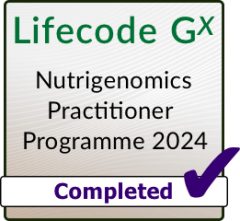Reference Number: 625
Year: 2012
Link: Link to original paper
Nutrition: Probiotic
Lactic Acid Bacteria: Heterofermentative
Summary
Abstract
Kimchi fermentation usually relies upon the growth of naturally-occurring various heterofermentative lactic acid bacteria (LAB). This sometimes makes it difficult to produce kimchi with uniform quality. The use of Leuconostoc mesenteroides as a starter has been considered to produce commercial fermented kimchi with uniform and good quality in Korea. In this study, a combination of a barcoded pyrosequencing strategy and a 1H NMR technique was used to investigate the effects of Leu. mesenteroides strain B1 as a starter culture for kimchi fermentation. Baechu (Chinese cabbage) and Chonggak (radish) kimchi with and without Leu. mesenteroides inoculation were prepared, respectively and their characteristics that included pH, cell number, bacterial community, and metabolites were monitored periodically for 40 days. Barcoded pyrosequencing analysis showed that the numbers of bacterial operational taxonomic units (OTU) in starter kimchi decreased more quickly than that in non-starter kimchi. Members of the genera Leuconostoc, Lactobacillus, and Weissella were dominant LAB regardless of the kimchi type or starter inoculation. Among the three genera, Leuconostoc was the most abundant, followed by Lactobacillus and Weissella. The use of Leu. mesenteroides as a starter increased the Leuconostoc proportions and decreased the Lactobacillus proportions in both type of kimchi during kimchi fermentation. However, interestingly, the use of the kimchi starter more highly maintained the Weissella proportions of starter kimchi compared to that in the non-starter kimchi until fermentation was complete. Metabolite analysis using the 1H NMR technique showed that both Baechu and Chonggak kimchi with the starter culture began to consume free sugars earlier and produced a little greater amounts of lactic and acetic acids and mannitol. Metabolite analysis demonstrated that kimchi fermentation using Leu. mesenteroides as a starter was completed earlier with more production of kimchi metabolites compared to that not using a starter, which coincided with the decreases in pH and the increases in bacterial cell number. The PCA strategy using all kimchi components including carbohydrates, amino acids, organic acids, and others also showed that starter kimchi fermented faster with more organic acid and mannitol production. In conclusion, the combination of the barcoded pyrosequencing strategy and the 1H NMR technique was used to effectively monitor microbial succession and metabolite production and allowed for a greater understanding of the relationships between the microbial community and metabolite production in kimchi fermentation.

